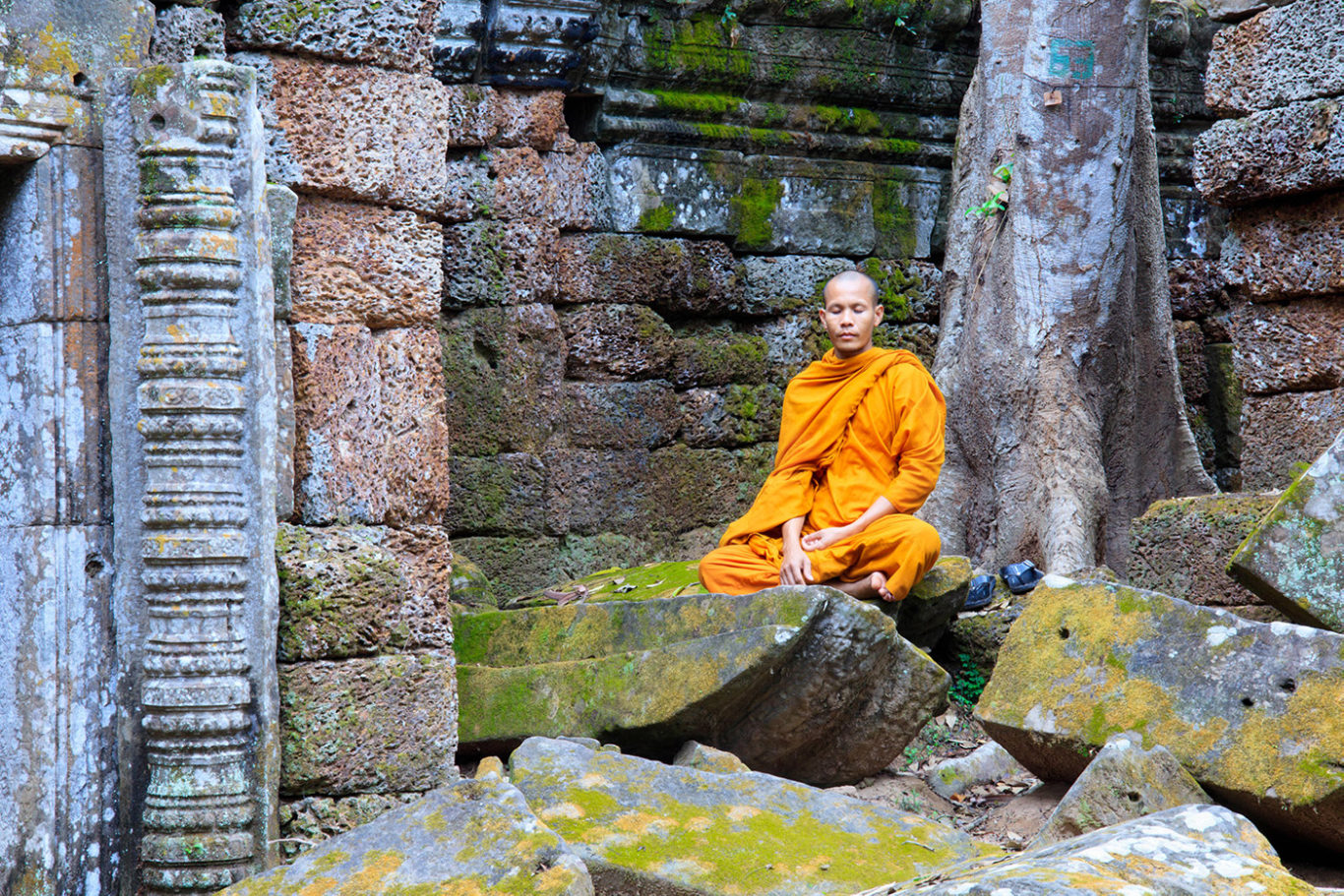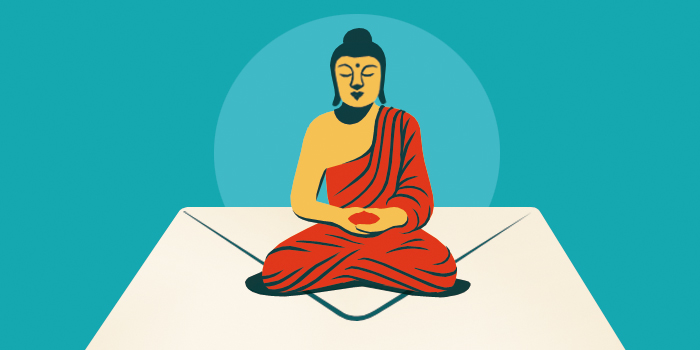What are the practices of Theravada Buddhism?

A Theravada Buddhist monk sits in meditation in the ruins of a temple in Angkor, Cambodia. | robertharding / Alamy Stock Photo
The essential practices of Theravada Buddhism, as outlined in the Buddha’s noble eightfold path, fall into three categories: the cultivation of ethical conduct (sila), concentration (samadhi), and wisdom (panna). The Buddha instructed his followers, both monastics and laypeople, to develop each of those three categories simultaneously. However, monks and nuns take on a far greater number and variety of practices, as outlined in the Vinaya, or Buddhist monastic code.
Theravada teaches that developing ethical conduct is a gateway to the path to awakening, as well as a practice that can improve the quality of one’s character and life along the way. Committing to the first five precepts is the baseline practice of ethical behavior. While monks and nuns take on many more precepts as part of their ordination, these same five are central to their practice too.
Another core practice, especially for the laity, is cultivating generosity. Generous acts, such as making offerings to and supporting monks and nuns, constitute a form of mind training, teaching the practitioner to orient their life around values other than self-concern. Monastics, for their part, practice generosity by preserving the teachings, offering them to students, and leading exemplary lives.
Meditation is the bedrock of Theravada practice. Although the Buddha taught meditation as a practice for anyone following his path, for many centuries it was pursued mainly by monastics. In meditation, students develop insight into the workings of the mind, how we create our suffering, and how to let go of the habits that perpetuate it. Theravada revival movements in Thailand, Myanmar, and Sri Lanka, particularly in the late 19th and early 20th centuries, popularized meditation among the laity, primarily those in the middle class. There are a number of different forms of meditation practice within Theravada Buddhism, but most take as their starting point instructions from the Pali canon, especially those for developing anapanasati, or mindfulness of the breath.
Chanting is another central practice. Chants serve as reminders and reinforcements of the Buddha’s teaching, and also prepare students for meditation by focusing the mind and priming the breath and body. Most Theravada chants are drawn from the suttas of the Pali canon and collected into books known as Paritta texts, which are used in nearly all chanting rituals. Reciting these segments of the teachings is part of one’s daily practice, especially in monasteries and meditation centers. Chanting almost always begins with reciting an homage to the triple gem—the Buddha, the dharma (teachings), and the sangha (community)—and then making an inner commitment to uphold and follow them. (This is typically referred to as taking refuge in the triple gem.)
Paying respect to monastics is integral to a Buddhist life in Theravada countries. As a student further commits to their spiritual development and seeks additional guidance from a teacher, those relationships deepen, take on a personal significance, and become more central to the practice.

Tricycle is more than a magazine
Gain access to the best in sprititual film, our growing collection of e-books, and monthly talks, plus our 25-year archive
Subscribe now